We offer a wide range of services to help resolve pet behavior issues. If you have a finicky feline or a problem pooch, help is available online, over the phone, and in person. Here are a few of the more common issues we hear about most often — that you can fix or prevent.
Declawing
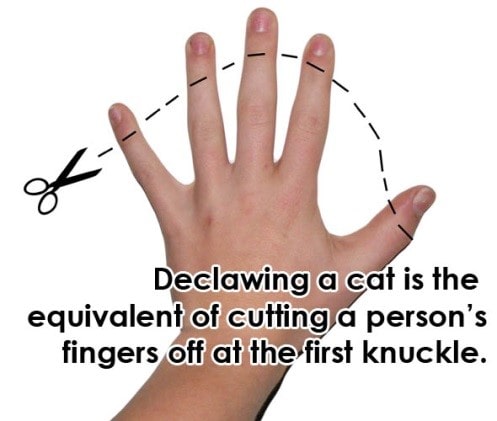
What to Know Before the Claws Go
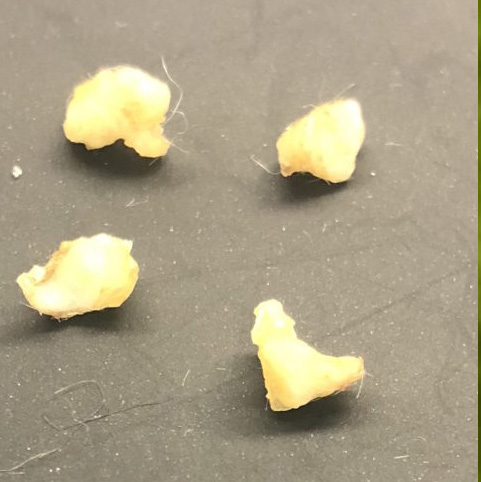
What is Declawing?
Is your new feline friend scratching the furniture or any unwanted areas in the home? Before you decide to resolve the issue with declawing, we hope you’ll read this information and consider the alternatives.
Did you know that declawing is actually amputation?
Declawing is a surgical procedure that actually is an amputation of the last joint of a cat’s toe. Most do not realize that part of the cat’s bone is removed also, not just the nail. Sometimes, there can be painful bone fragments that are left behind like those pictured here.
Long-term Effects
Hundreds of cats are surrendered to us by their owners each year because of litter box issues that have resulted from being declawed.
- Declawing can lead to serious long term physical and behavior problems in cats. Declawed cats often avoid the litter box because many litters are too painful for their paws.
- When you declaw a cat, you take their primary defense away from them. This can sometimes negatively affect a cat and they may turn to biting as a defense mechanism.
- Cats tend to walk on their toes and once declawed their gait will often change which may eventually lead to arthritis and pain in the legs, hips, and back.
It is for all these reasons that the Humane Society for Hamilton County does not support the declawing of cats.
Alternatives to Declawing
- Nail Trims – You may be able to resolve unwanted scratching by simply keeping your cat’s nails trimmed.
- Soft Paws/Nail Caps for Cats – Soft Paws are nail caps that are placed over your cat’s nails. They fit securely over the nails and serve as a great alternative to declawing. Please note these do need to be replaced about every 6 weeks. Check out some nail cap solutions here!
- Cat Scratching Post – It is instinctual for a cat to scratch. In order to prevent your cat from scratching the furniture or unwanted items, you must provide your cat with scratching posts throughout your home. The key is to provide your cat with a scratching post that he/she prefers. Not all scratching posts and toys are created equal. Try scratching posts of different heights, material, and the perfect location–and don’t forget the power of sprinkling a little cat nip on the post to capture your kitty’s attention!
- Feliway – Feliway is a synthetic feline facial pheromone that is used as a calming aid. Cat’s are territorial by nature and scratching/rubbing their scent on items is natural to them. Spraying Feliway on objects that you do not want your cat to scratch will effectively deposit a feel good pheromone so you cat doesn’t feel the need to scratch the object.
- Double Sided Tape – Double sided tape can be placed on your furniture or any area that your cat is scratching. The tape will deter the cat from going to those certain areas. Cats do not like the feeling of tape on their paws and will avoid these areas. Sticky Paws is a product designed for this purpose!

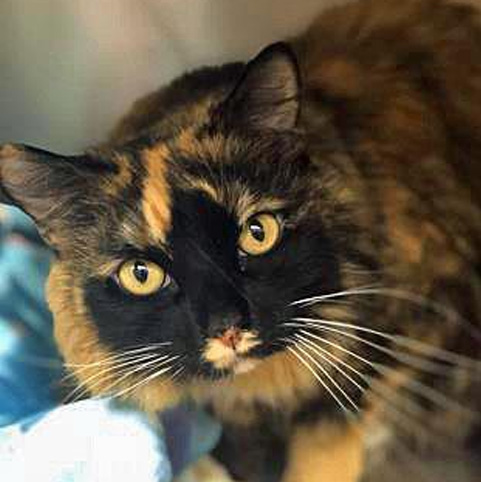
Already Declawed?
Is your cat already declawed and you are experiencing behavior concerns or litter box aversions? This could be due to pain from your cat’s declaw no matter how long ago the procedure was completed.
The first step in correcting your cat’s behavior concerns or litter box issues is to contact your veterinarian to see if your cat is currently experiencing pain from a declaw.
The Humane Society for Hamilton County is an active participant in The Paw Project. We have funded corrective surgeries for dozens of cats surrendered to our shelter that were suffering from the effects of declawing. The Paw Project completes examinations on cats and provides declaw repairs. We have funded corrective surgeries for dozens of cats surrendered to our shelter that were suffering from the effects of declawing.
We highly recommend that you reach out to The Paw Project if your cat is currently having a behavior concern or litter box issues resulting from declawing.
To learn a few steps to help solve litter box aversions, please click here.
To learn a few steps to help avoid unwanted scratching, please click here.
If you would like to speak to our behavior department directly, please email behaviorcoordinator@hamiltonhumane.com.
Additional Information
Here are some additional resources to learn about the effects of declawing. You may also reach out to us at behaviorcoordinator@hamiltonhumane.com for free advice on resolving unwanted kitty behavior.
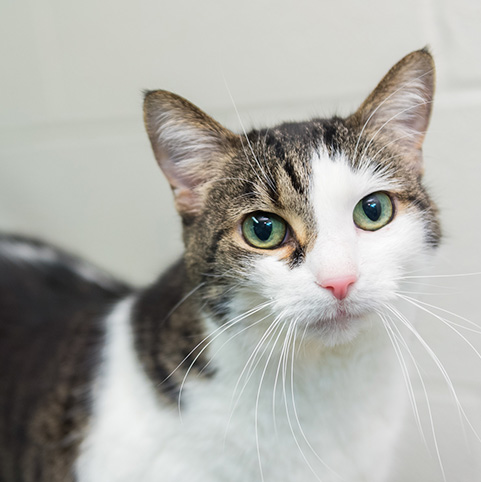
Introducing Cats & Dogs FAQs
It’s up to you to properly introduce your new cat to your dog, and to set up introductions carefully so that the cat feels safe and has a pleasant experience getting acquainted with your dog.
At first, confine your new cat in a room with her food, water and litter box. You can start to introduce your cat and your dog by the doorway to that room. Fill your pockets with treats for the dog, like bite-sized pieces of chicken or cheese, and treats that your cat loves as well, such as bits of meat or tuna.
Keep the door open but block it with a baby gate. Walk the dog slowly by the doorway several times each day for a couple of days. Praise and treat him for calm behavior, and then toss the cat a treat as well. This way, your cat will associate your dog with delicious treats. If your dog overreacts to the cat, distract him and get his attention focused on you.
Avoid accomplishing this by using leash corrections. Instead, get your dog’s attention by asking him to do basic obedience skills, like Sit and Down. Use delicious treats to reward him for his obedience in the presence of something as tempting and distracting as the cat!
Your cat should be free to approach the baby gate to get closer to the dog or to retreat if she wants to. Reward her any time she approaches the baby gate by tossing her treats.
Let the cat set the pace. If she chooses to run and hide under the furniture when you and the dog walk by, let her. It simply means your introductions will take longer—maybe weeks longer. Taking things slow will help to avoid a bad first impression.
Keep in mind that cats can take months to form relationships with other animals. Never attempt to force any interactions by holding your cat, putting her into a crate or carrier or restricting her movement in any way.
If your cat doesn’t seem afraid of your dog as you pass by the doorway of her room, or if she even tries to jump over the gate, you can introduce them in your living room or other large room.
Make sure your cat can get away from the dog during the introduction. She should have the freedom and room to retreat, run and hide, slip beneath a piece of furniture where the dog can’t follow or jump up on something higher than the dog.
Keep the dog with you on-leash during these introductions in the living room and for the first couple of weeks. Allow the leash to be loose, but hold onto it in case your dog decides to try to chase your cat.
Use your recall and “leave it” exercises if your dog starts nosing or following your cat and she seems perturbed. When you ask the dog to come to you or leave your cat alone and he responds, be sure to give him a very special treat.
When you’re not present or can’t directly supervise, keep your cat and dog confined in separate areas of the house.
Interrupt any chasing, barking or agitated behavior from the dog by using a leash to move him away from your cat. Redirect his attention to another activity or ask him to do some easy obedience skills for food rewards. Avoid scolding, yelling or jerking on your dog’s leash. A positive approach is crucial because you want your dog and cat to learn a pleasant association with each other’s presence.
You don’t want them to learn that everyone gets tense and angry and bad things happen when the cat or dog is around. Dogs are more likely to engage in chase or prey behavior when they’re tense or aroused.
Most cats will accept a young dog and correct him when necessary. Be sure your cat’s nails are trimmed before bringing the dog home so that she doesn’t hurt him if she corrects him.
Your dog shouldn’t have access to your cat’s litter box. If he does, it will be highly stressful to your cat, which may cause the cat to stop using it, and the dog may eat the feces and litter.
To prevent your dog from eating your cat’s food, consider feeding your cat on a high surface, like a window sill, dresser, shelf or cat tree furniture, or by moving the food and litter box behind a gate.
Introducing Another Cat
Patience is key! There’s no set time limit on how long you should stay in one phase before entering the next.
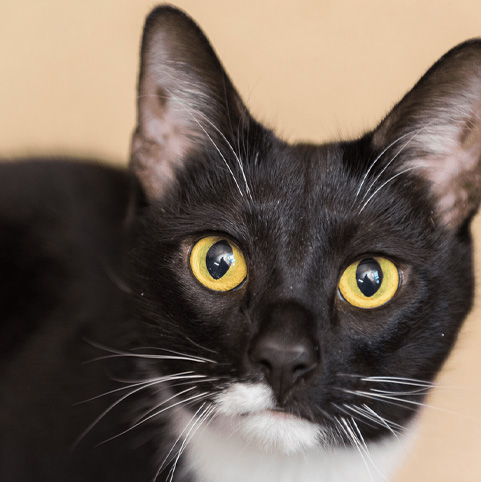
Step 1. Scent
Ensure that your new cat has her own room to stay in for a week or so. She can acclimate to the sights, scents, and sounds of the home in a controlled environment.
- Feed your new cat and your other cat on either side of the door of this room. All of the cats will associate the scent with good things (food!).
- Leave your new cat’s carrier outside the room so your other cat can get used to her scent.
- Never force a scent by rubbing another cat’s scent on the cat.
Keep your first cat in a separate room, and allow your new cat out to explore for a few minutes after a few days. This will distribute the new cat’s scent without the cats having to interact.
Step 2. Sight
Leave the door open a crack while the cats are eating on either side. If one cat tries to bolt through the door, you can use a baby gate or door stop to prevent the cat from bolting through.
Step 3. Touch
Leave the door open fully when feeding the cats. Again, use a baby gate if needed to prevent one cat from rushing the door.
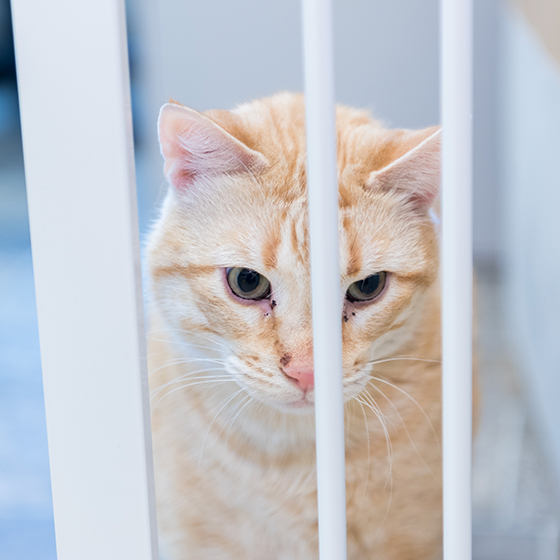
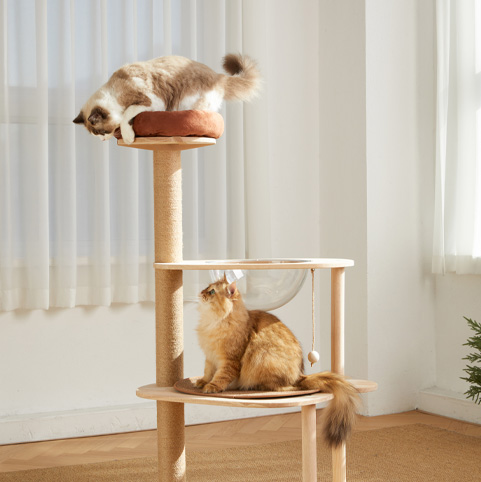
Step 4. The Final Step
Make sure there is plenty of vertical space for each of your cats, and also scratching posts and litter boxes before your cats occupy the same space.
For more information, visit: https://www.catbehaviorassociates.com/how-to-introduce-a-second-cat/
Going Outside the Litterbox
Troubleshooting: What to do when kitty is eliminating outside of the litter box.
Household Soiling FAQ
Cats may avoid the litter box for many reasons, including:
- Medical problems (urinary tract infections, urinary crystals, diabetes, worms, etc)
- Unclean litter box
- Not enough litter boxes
- Being confronted in the litter box by a family dog, cat, or human
- Undesirable litter type or litter box type
- Undesirable litter box location (near noisy appliance, insufficient privacy, in an area with no escape)
- Preferred feel of a surface or location other than the litter box
If your cat starts eliminating outside the litter box, your first stop should be the vet clinic to ensure that no medical cause exists. Cats that have just been spayed or neutered may still have a tendency to spray or mark objects for up to a month.
Once you’ve eliminated any medical cause, begin scooping all litter boxes daily. Clean any soiled areas with an effective odor remover.
To determine which litter type your cat prefers, offer two or three different options side-by-side to see which one he uses most. Then, place the preferred litter into different boxes to see which type he prefers most (covered, low-sided, high-sided, self-cleaning).
Also try the preferred litter and box in a different location that your cat might prefer.
It may be best to confine your cat to a small area of your home that the cat does not soil, with his litter box and other essentials. Preventing access to the soiling area may be the easiest solution: keep doors shut, keep laundry baskets and clothing picked up, etc.
If you see your cat soiling inappropriately, interrupt him with a squirt from a water bottle, loud clap, or noise device. Never yell, physically punish, or rub his nose in it- he will not associate the punishment with his inappropriate soiling.
If your cat is using a particular surface, such as tile floor or carpet, you might make him a litter box that simulates this. Place a carpet square or tile in the bottom of the box and very gradually add litter until he’s comfortable using the litter box.
Affection Biting
Some cats take it to a new level and engage in affection biting or love bites. They may start out rubbing faces with you, and end up nipping you on the tip of the nose. Some love bites can be quite painful. There are steps you can take to keep cuddle times pleasant for both you and your cat.
Overstimulation
Affection biting can result when the cat gets overstimulated. When you pet the cat, do so calmly and slowly. Overzealous cuddling might result in a love bite.
Say "No"
If the cat does engage in affection biting, immediately tell her, “No” in a firm voice and stop giving her attention.
Short & Sweet
Keep affection time short. The longer you pet the cat, the more stimulated she will get. This can lead to a love bite. Short and sweet is the motto.
Use A Toy
Do not roughhouse with your cat during playtime. Use a toy you can dangle for her or teach her to play fetch. Using your hands to play with her will encourage her to bite.




